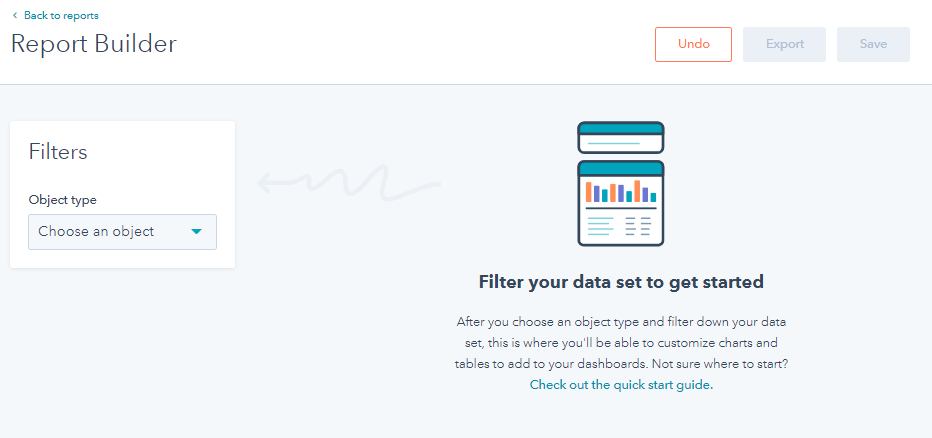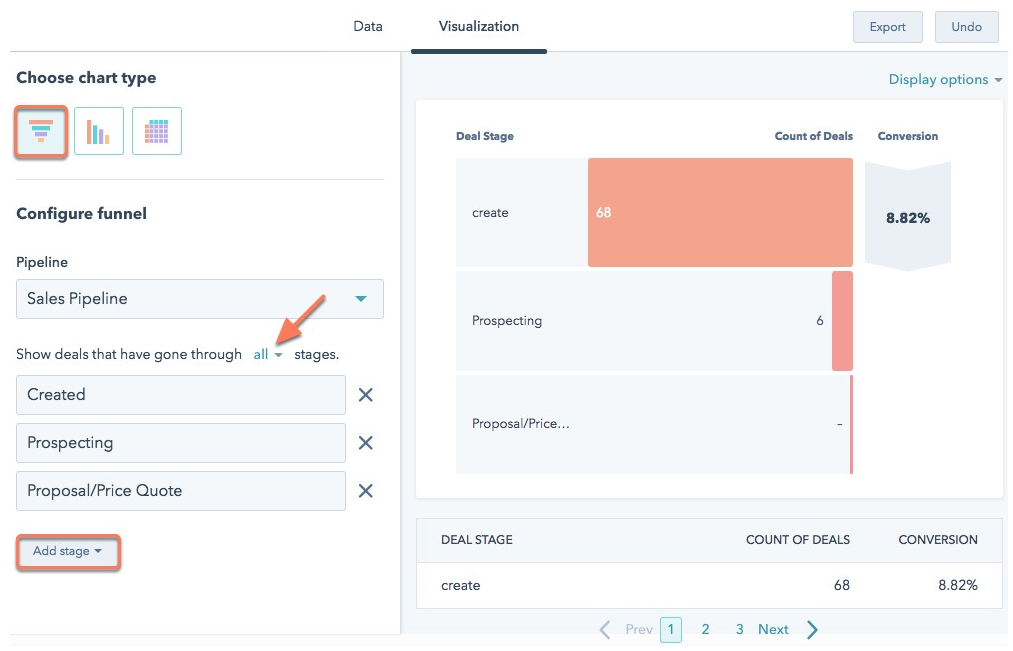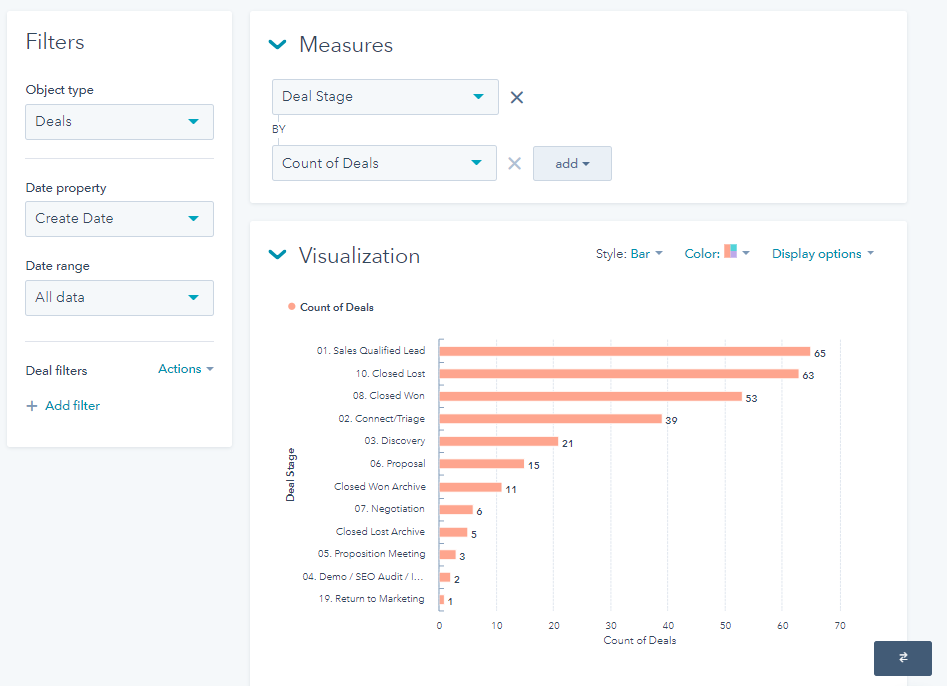Tired of being unable to run reports on or across data sets to get a consolidated view of marketing or sales performance? Need to analyse how touch points on your website are engaged with but lack the tools to do so?
Ladies and gentlemen, fear not. The moment you have all been waiting for – HubSpot’s updated report builder (now featuring cross-object reporting) – is here!
As of INBOUND 18, HubSpot Professional, Enterprise and/or Reporting add-on users can now build and run custom reports on or across multiple data sets, funnels and pipelines, and event funnels (Enterprise users only). This is essentially called 'cross-object reporting'.
These new reports are easy to compile and can be saved and added to the HubSpot dashboard for quick access. The only limitation is that the number of reports that can be saved and added to the dashboard is dependent on the user’s HubSpot product subscription.
For example, Professional accounts now get 1 additional custom dashboard and 20 custom reports. Enterprise accounts get 25 custom dashboards and 500 custom reports.
Previously you had to pay a fair bit for the reporting add-on if you wanted to build any custom reports or dashboards. With the update however, the reporting add-on is tied into the heart of the HubSpot marketing and sales tools, meaning you don't have to purchase different reporting tools to measure your marketing or sales activity!

Create and run reports on or across data sets
Using these custom reports, HubSpot users can build and run reports on or across contacts, companies, deals, tickets, or products and any associated activities. So if a user wanted to analyse data from a specific source and cross reference that data against another source, the HubSpot report builder provides the means for them to do so.
But why is this such a big deal?
It's important because, in the past, reporting on deals based on specific information stored on a contact record, such as lead source or region, or on the company property, such as industry or number of employees, was impossible as the tool didn't facilitate that kind of functionality. The tool could only run a report on one object (such as a contract, company or deal) at a time, meaning that marketing and sales teams would have to piece the rest of the picture together to understand the context.
Now, with cross-object reporting, marketers and salespeople can build reports that are tied to specific properties and deals. For example, if you want to create a report based on which leads led to sales opportunities, you can tie deals of this nature to the 'first conversion' property in HubSpot using the report builder. Cool, eh?
So, if you want to figure out which types of leads lead to revenue opportunities or closed details, it's now entirely possible! These reports can be readily shared with your team or live independently on the reports screen.
You could use cross-object reporting to...
-
Find out what marketing activities/channels led to closed deals
-
Understand what lead characteristics are most likely to lead to closed won deals
-
Tie customer service tickets to their relevant contacts and companies
-
Find out how much time sales reps are spending on deals in progress
-
And much, much more!
Take advantage of funnel and pipeline reporting
As well as being able to report on or across data sets, users can also use funnel and pipeline reporting. Funnel and pipeline reports allow users to see how contacts (or deals) are moving through specific lifecycle or deal stages over time.
Previously, the tool only allowed you to build a funnel with all stages and in order for a contact to appear in the funnel, they would have to have gone through all stages. Naturally, this led to very skewed results in cases where deals were added to the funnel at a later stage or skipped a stage (which is fairly standard in some engagements).
Please see the screenshot below. It shows that with the updated report builder, you can now select certain deal stages and filter results based on whether a contact has been through all or any of the stages.

For instance, if a user wanted to see current contacts that have gone through the lifecycle stages of subscriber, lead and MQL, they could compile a custom report, select the parameters, create the report, and then filter it to show that information. Furthermore, users can configure the visuals of every report they create so that they can show the information in the way they want.

Analyse and compare user activity on your website
Finally, event funnels. But firstly… what are events?
Events in HubSpot essentially allow users to understand whether a website visitor has clicked on a specific URL or element on a web page.
Events are created through the HubSpot Events Bookmarklet. Users download the Events Bookmarklet, go to the page which they want to record clicks or activity on, click an element on the page (a call-to-action, for example) and set up an event.
So how do events and HubSpot’s report builder come together? Well, HubSpot’s updated report builder allows users to create a funnel of events to analyse how visitors are moving through the website and different touch points.
With reports providing data on the performance of the website and individual touch points, users can then begin to optimise paths to conversion or purchase.
While the event funnel reporting functionality is only available to Enterprise HubSpot users, the ability to run reports on and across data sets, as well as reports on where contacts are in the sales cycle or deal pipeline is tremendously useful for businesses.
If you want to compile granular reports and present them in a way that is easily digestible for your senior management, CEO and board of directors, HubSpot's updated report builder with cross-object reporting provides what you need.
Want to get more out of your HubSpot reporting and demonstrate the ROI of your marketing activities? Check out our Marketing Manager's Guide to Marketing ROI with HubSpot Analytics!










.png)





